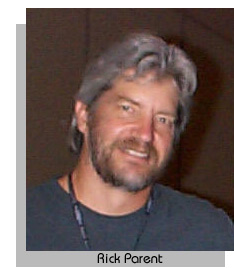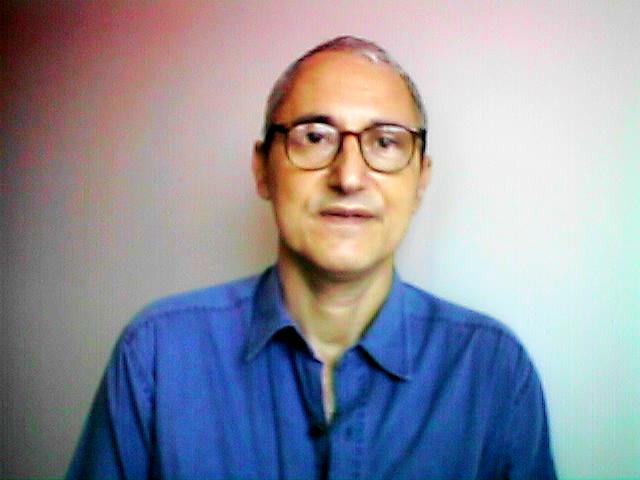|
| Daniel
Cohen-Or (Tel Aviv University, Israel) |
 |
| |
Differential
Coordinates and Least-Squares Meshes |
Representing surfaces
in local, rather than global, coordinate systems proves to
be useful for various geometry processing applications. In
particular, we have been investigating surface representations
based on differential coordinates, constructed using the Laplacian
operator. Unlike global Cartesian coordinates, that only represent
the spatial locations of points on the surface, differential
coordinates capture the local surface details which greatly
affect the shading of the surface and thus its visual appearance.
On polygonal meshes, differential coordinates and the discrete
mesh Laplacian operator provide an efficient linear surface
reconstruction framework suitable for various mesh processing
tasks. In my talk I will discuss the important properties
of differential coordinates and show their applications for
surface reconstruction. In particular, I will discuss the
Least-squares meshes and show some results of details-transfer
and surface completion.
Very short bio:
Daniel Cohen-Or is an
Associate Professor at the School of Computer Science at Tel-Aviv
University. He received a B.Sc. in both Mathematics and Computer
Science (1985), an M.Sc. in Computer Science (1986) from Ben-Gurion
University, and a Ph.D.~from the Department of Computer Science
(1991) at State University of New York at Stony Brook. His
current research interest includes, shape modeling, visibility,
and image synthesis.
| James
Greenleaf (Mayo Clinic College
of Medicine, USA) |
 |
| |
Vibro-acoustography and Vibrometry
for Imaging and Measurement of Biological Tissues
|
Vibro-acoustography
is a method of imaging and measurement that uses ultrasound
to produce radiation force to vibrate objects. The radiation
force is concentrated laterally by focusing the ultrasound
beam. The radiation force is limited in depth by intersecting
two beams at different frequencies, producing interference
between the beams at the difference frequency only at
their intersection. This results in a radiation stress
of limited spatial extent on or within the object of
interest. The resulting harmonic displacement of the
object is detected by acoustic emission, ultrasound
Doppler, or laser interferometery. The displacement
is a complicated function of the object material parameters.
However, significant images (Vibro-acoustography) and
regional measurements (Vibrometry) can be made with
this arrangement. Vibro-acoustography can produce high-resolution,
speckle free images of biologically relevant objects
such as breast micro-calcification and lesions, vessel
calcifications, heart valves, and normal and calcified
arteries. Vibrometry can also make spot measurements
such as detection of micro bubble contrast agent concentration
in vessels. Several examples of these results will be
described.
Very short bio:
Prof. Greenleaf
is currently Professor of Biophysics and Associate Professor
of Medicine, Mayo Medical School, and Consultant in
the Departments of Physiology, Biophysics, and Cardiovascular
Disease and Medicine, Mayo Foundation. He has served
on the IEEE Technical Committee for the Ultrasonics
Symposium for ten years. He is chair of the IEEE UFFCS
Subcommittee on Ultrasonics in Medicine/IEEE Measurement
Guide Editors, and on the IEEE Medical Ultrasound Committee.
Dr. Greenleaf has six patents and is recipient of the
1986 J. Holmes Pioneer award and the William Frye award
from the American Institute of Ultrasound in Medicine
and is a Fellow of IEEE and AIUM and ASA. Dr. Greenleaf
was the Distinguished Lecturer for IEEE Ultrasonics,
Ferroelectrics, and Frequency Control Society (1990/1991).
His special field of interest is in ultrasonic biomedical
imaging science and has published more than 234 articles
and edited five books in the field. |
| Rick
Parent (The Ohio-State University,
USA) |
 |
|
MARKERLESS
MOTION CAPTURE
|
Motion capture is a popular
tool for computer animation, especially for animating the
human figure. Motion capture, or mocap as it is more popularly
called, requires that the person whose motion is being captured
is outfitted with some type of active sensors or passive markers
in order for the system to record movement. The positions
of these sensors or markers are used to compute the positions
of the joints. The joint positions are then used to reconstruct
the joint angles over time. These joint angles can then be
used with an appropriately configured skeleton to animate
a synthetic figure. The problem with conventional motion capture
is that it requires expensive equipment, requires extensive
set-up and initialization, needs a conditioned environment
and is restrictive of the motion being captured. An active
area of research is concerned with developing techniques for
capturing the motion of a human figure without the instrumentation
required by traditional mocap systems. Various approaches
have been tried with limited but interesting results. The
approaches differ in a number of ways, among them: reconstruction
of motion in two dimensions versus three dimensions, use of
a single camera versus multiple cameras, use of extracted
silhouettes versus use of color and texture, use of limiting
assumptions about the motion being tracked, use of knowledge
of anatomy and physics, robustness, and responsiveness. I
will survey some of these approaches, presenting some results
and discussing trade-offs. Our own work, which is a single-camera,
extraced silhouette, model-based, 3D approach will be presented.
This area of research represents an interesting blend of vision
and computer graphics.
Very short bio:
Rick Parent is an Associate Professor in
the Computer Science and Engineering Department of Ohio State
University (OSU). As a graduate student, Rick worked at the
Computer Graphics Research Group (CGRG) at OSU under the direction
of Charles Csuri. In 1977, he received his Ph.D. from the
Computer and Information Science (CIS) Department, majoring
in Artificial Intelligence. For the next three years, he worked
at CGRG first as a Research Associate, and then as Associate
Director. In 1980 he co-founded and was President of The Computer
Animation Company. In 1985, he joined the faculty of the CIS
Department (now the Department of Computer Science and Engineering)
at Ohio State. Rick's research interests include various aspects
of computer animation with special focus on animation of the
human figure. He is the author of Computer Animation: Algorithms
and Techniques, published by Morgan Kaufmann in 2001. Currently,
he is working on facial animation and on using model-based
techniques to track human figures in video.
Antonio
Oliveira (UFRJ,Brazil) |
 |
| |
| Enhancing the topology control
of snakes and T-Surfaces |
Consider a set of simple
polygonal curves, disjoint to each other, evolving in the
plane by discrete steps. If necessary, after each step, simplicity
is recovered by means of splits and disjunction by a merge,
when two of them collide.
Implementing the evolution
of such curves in an efficient way, requires embedding them
into a framework which partitions the plane into cells and
redefining the curves so that they do not have an unbounded
number of vertices in a same cell.
Topologically Adaptable
Snakes (T-snakes), which have been created to segment images
with multiple objects, evolve like the curves of the system
above. The standard form of enabling these snakes to make
topological changes is to consider the union of their contours
as a level set of a step dependent function. An alternative
approach reduces the time lag, so that, at each step, a snake
reaches a single new cell vertex.
In the Loop-snakes model,
the snakes move in a way that each region which has not been
visited by them is delimited by a loop contained in regularized
approximations of the contours where the snakes are [UTF-8?]positioned
after a motion step. These loops ÿÿ which are taken
as the snakes of the next step - must be distinguished from
those defining doubly visited regions. This can be done in
constant time at the very moment the loop is created. The
whole process can be implemented by examining only the contours,
without the need of considering their surroundings. In addition,
the curves of a step need to be traversed only once. Moreover,
as the processing essentially requires only data produced
at the current step, it is easier to refine the cells mesh
during the process, revert the evolution direction of a snake
and incorporate the structure used to control the topology
into the representation of the curves.All
these desirable properties have a price. Topological changes
get more complicated. However, as the number of these changes
is usually irrelevant, compared to that of snaxels, this fact
affects slightly the performance of the process.
Bubble T-surfaces are
the 3D version of Loop-snakes. The case of a single contracting
T-surface, has been studied with more details. If the faces
of the moving surfaces are updated in breadth first order
it is easier to obtain their bubble structure. That structure
corresponds in the 3D case to the loop tree of a planar curve.
Different regularization approaches have been tried and new
questions like preventing the
unnecessary creation of genus are treated.
Very short bio:
Antonio Alberto Fernandes
de Oliveira has graduated in Electronic Engineering(1973)
and got his M. Sc and D.Sc. degrees in Mathematics(1974) and
Optimization(1979). Since 1975 he has been a professor of
the department of Systems Engineering and Computer Sciences
of COPPE- Federal University of Rio de Janeiro and was a Visiting
Scholar in University of Berkeley from 1988 to1990. Among
others, he helped to introduce the areas now covered by SIBGRAPI
into the Brazilian University. He took part in the creation
of the Computer Graphics group of his department in 1983 and
started the research activities/ offered the first regular
courses on Computational Geometry (1985) and Computer Vision
(1990). He is also the author of three books and his present
areas of interest are Procedural Recognition, Reconstruction
from Projections and Range-Maps and Segmentation of 2 and
3D-images with
multiple objects.
|



